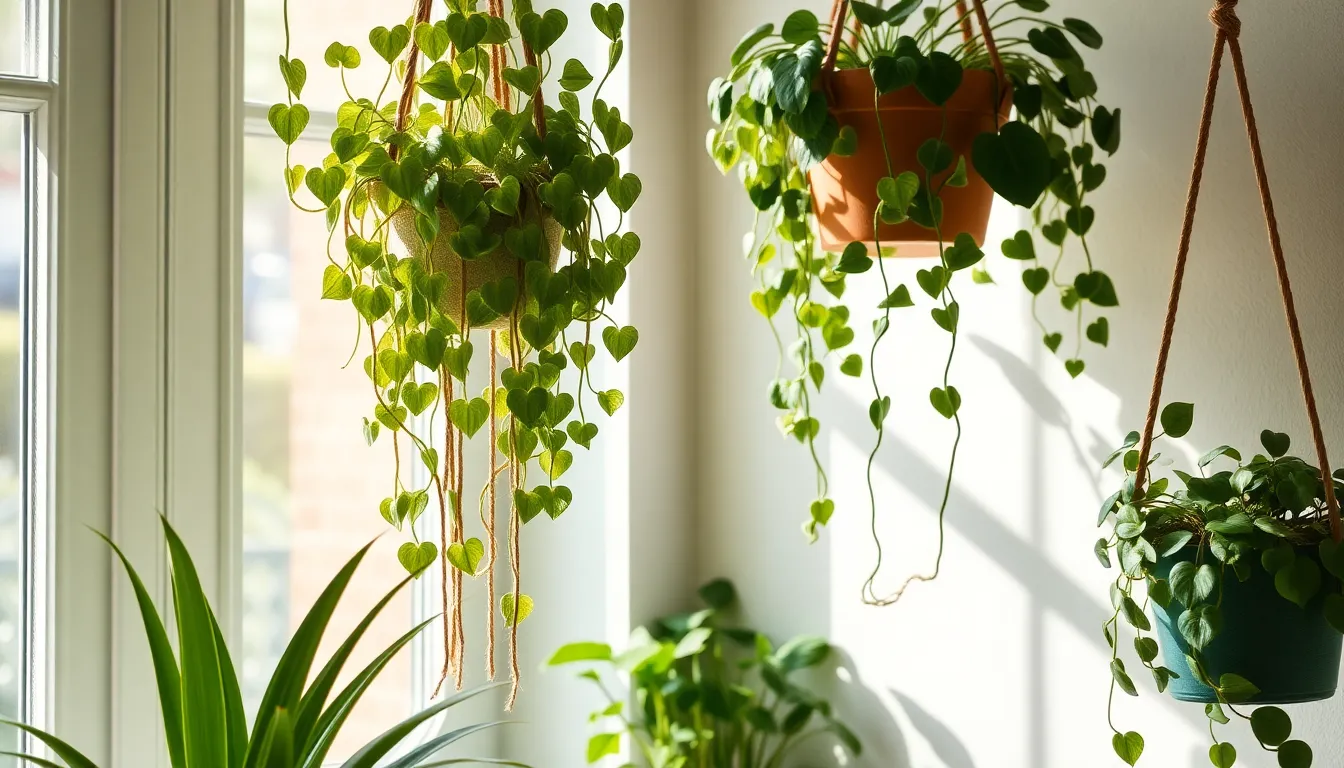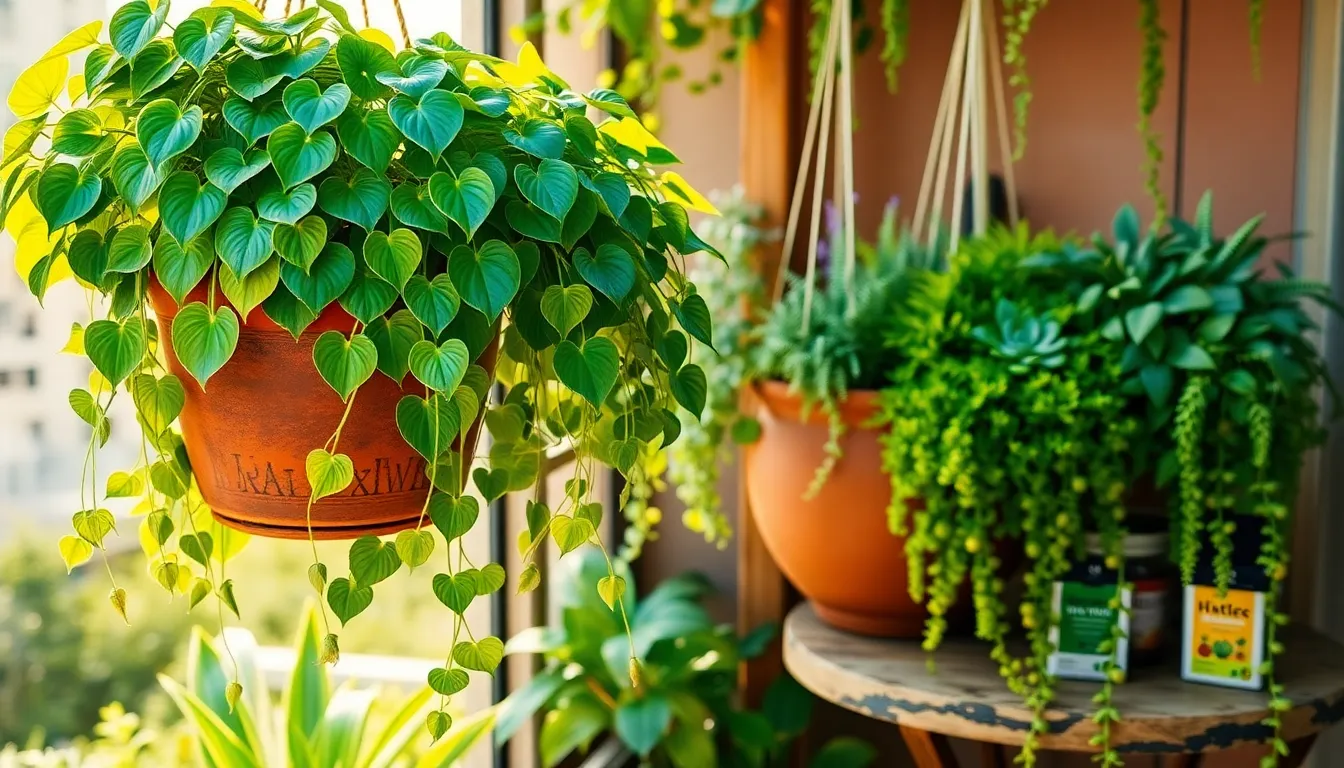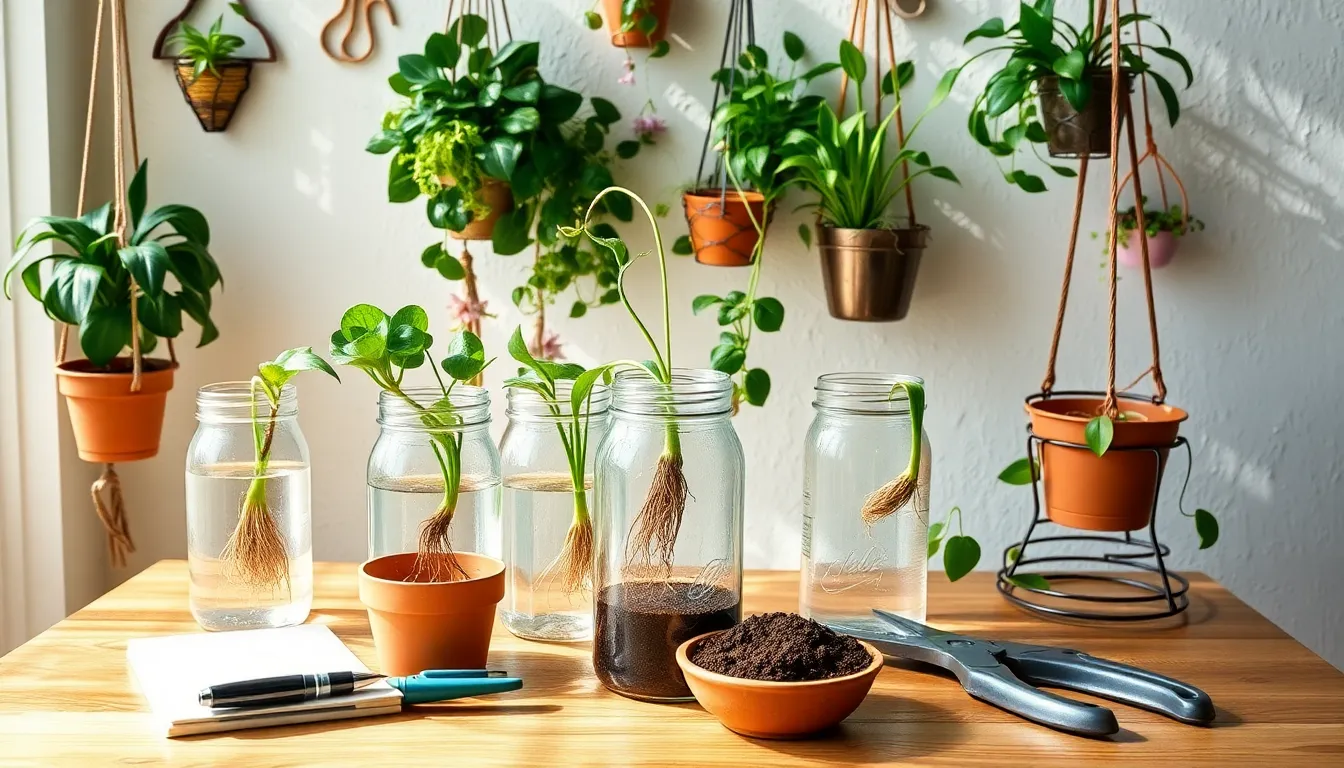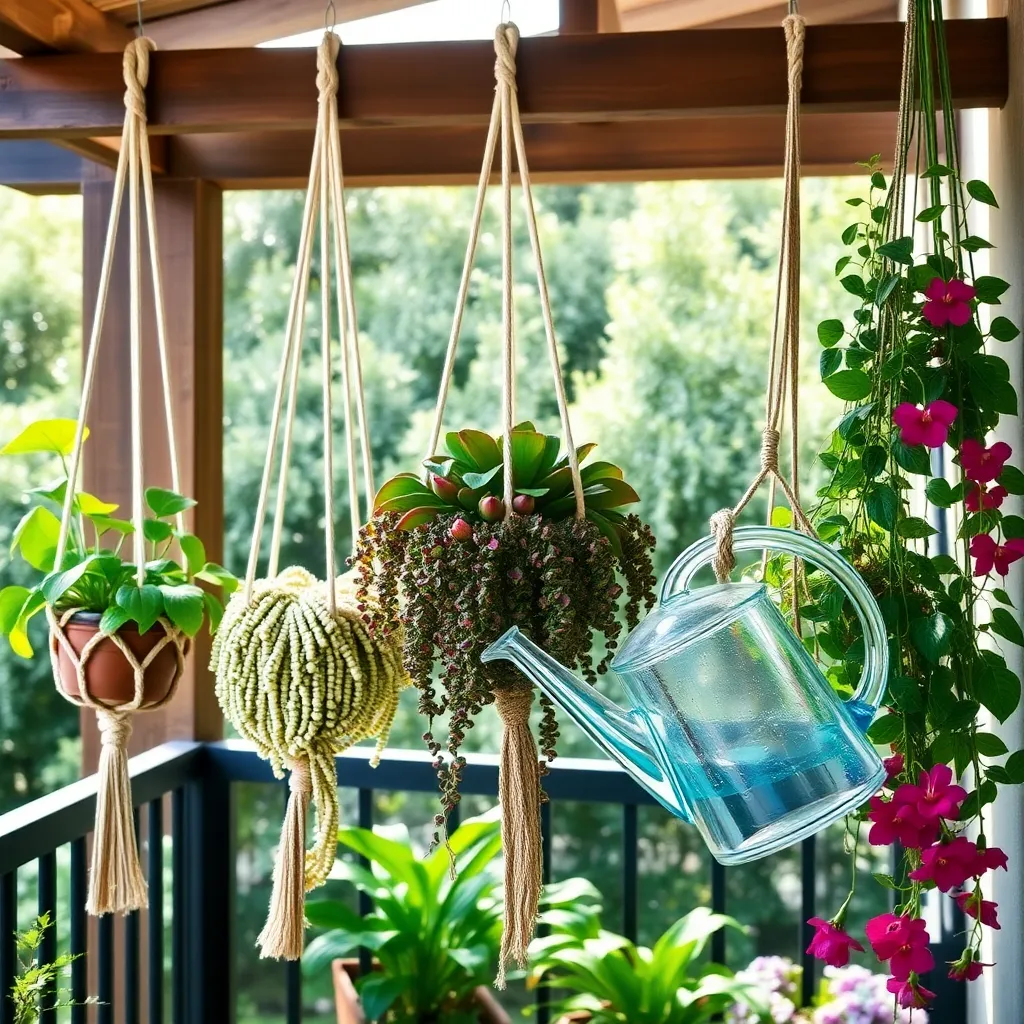Whether you’re a seasoned horticulturist or just dipping your fingers into the soil for the first time, welcoming rare hanging plants into your home can be a delightful adventure. These botanical treasures not only bring an enchanting touch to any space but also showcase the unique beauty that nature has to offer, all while being surprisingly easy to nurture.
For both the green-thumbed and those still learning the ropes, the allure of rare hanging plants lies in their distinctiveness and the sense of accomplishment they bring when they flourish. Imagine transforming your living area into a verdant sanctuary with plants that captivate the eye and stir curiosity, yet demand only a gentle touch in return.
In this article, you’ll discover six extraordinary hanging plants that defy the notion that rare means difficult. We’ll guide you through each plant’s unique characteristics and simple care requirements, ensuring that your journey into the world of rare flora is as rewarding as it is manageable.
Discovering Unique Hanging Plants
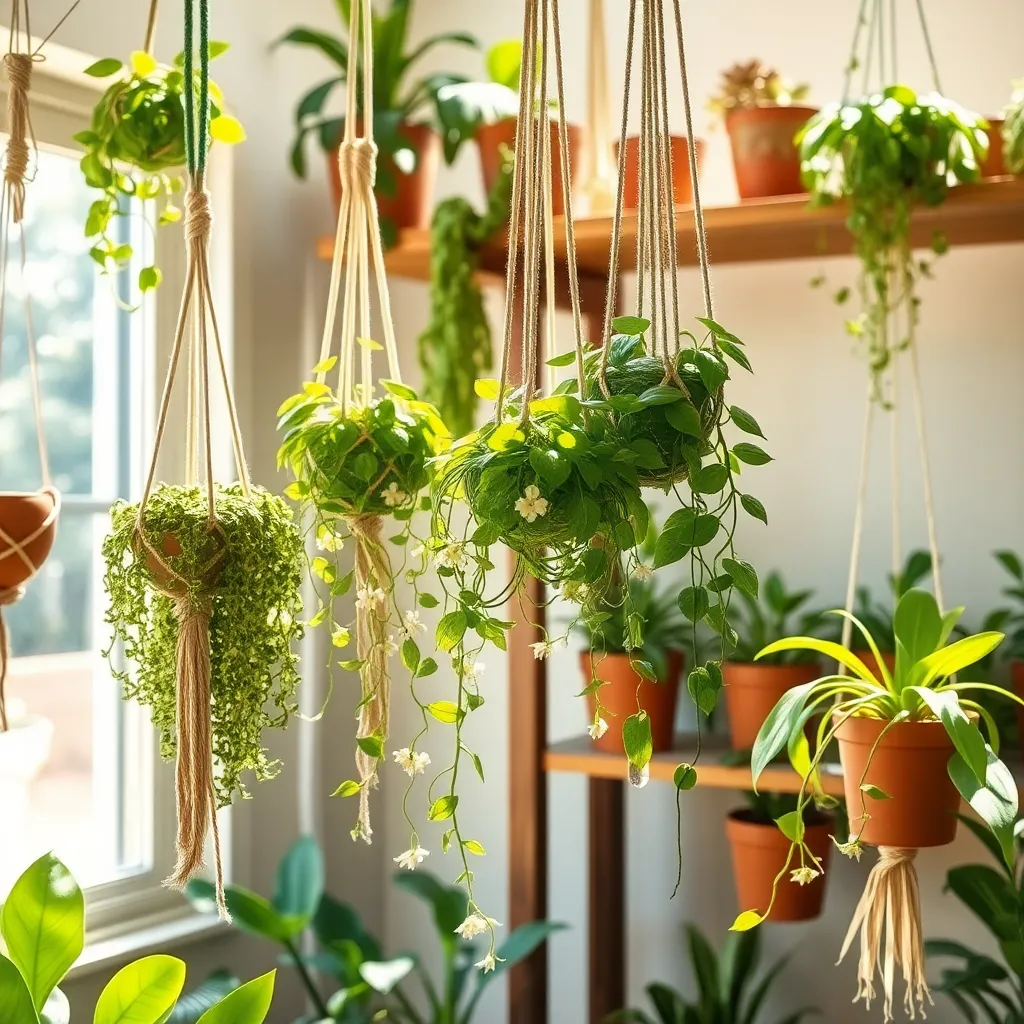
Exploring the world of unique hanging plants can transform any space into a lush haven with minimal effort. One such plant is the String of Pearls (Senecio rowleyanus), which thrives with bright, indirect light and well-draining soil, such as a cactus mix.
To keep your String of Pearls healthy, ensure the potting mix dries out completely between waterings, preventing root rot. For more advanced care, consider propagating it by snipping a few healthy strands and replanting them in moist soil.
Another stunning choice is the Hoya linearis, known for its delicate, cascading foliage and fragrant flowers. It prefers a humid environment, so misting the leaves or placing a humidity tray nearby can boost its growth.
For those seeking a more exotic option, the Dischidia nummularia, or the Button Orchid, is ideal. This plant requires a balance of moisture and air circulation, so using an orchid mix can enhance its vitality.
Even beginners can master the care of the Button Orchid by ensuring it receives filtered light and occasional feedings with a diluted orchid fertilizer. With these techniques, both novice and seasoned gardeners can successfully cultivate rare hanging plants that captivate and inspire.
Ideal Conditions for Rare Vines
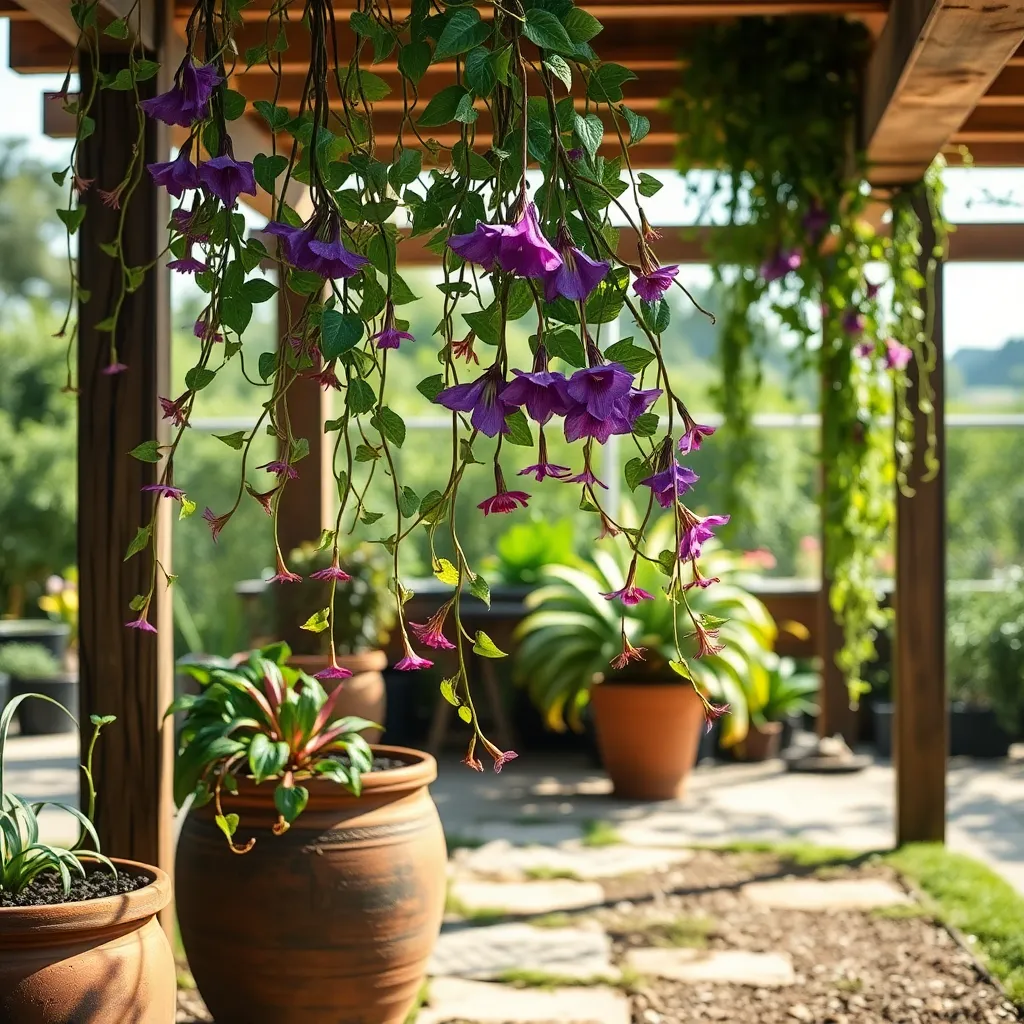
When caring for rare vines, understanding their specific lighting needs is crucial for their growth. Most rare hanging vines thrive in bright, indirect light, which mimics their natural habitat beneath forest canopies.
Soil composition is another key factor, and using a well-draining potting mix can make all the difference. A blend of peat moss, perlite, and orchid bark is ideal for ensuring proper aeration and moisture retention.
Watering these vines requires a delicate balance, as overwatering can lead to root rot. It is best to water when the top inch of soil feels dry, and use room-temperature water to avoid shocking the roots.
Humidity levels play a significant role in the health of rare vines, as many originate from tropical climates. Maintaining a humidity level of around 60% can be achieved by misting the leaves or using a pebble tray with water.
For more advanced care, consider feeding your rare vines with a balanced, water-soluble fertilizer every four to six weeks during the growing season. This will provide them with the necessary nutrients to thrive and produce lush foliage.
Simple Care Tips for Beginners
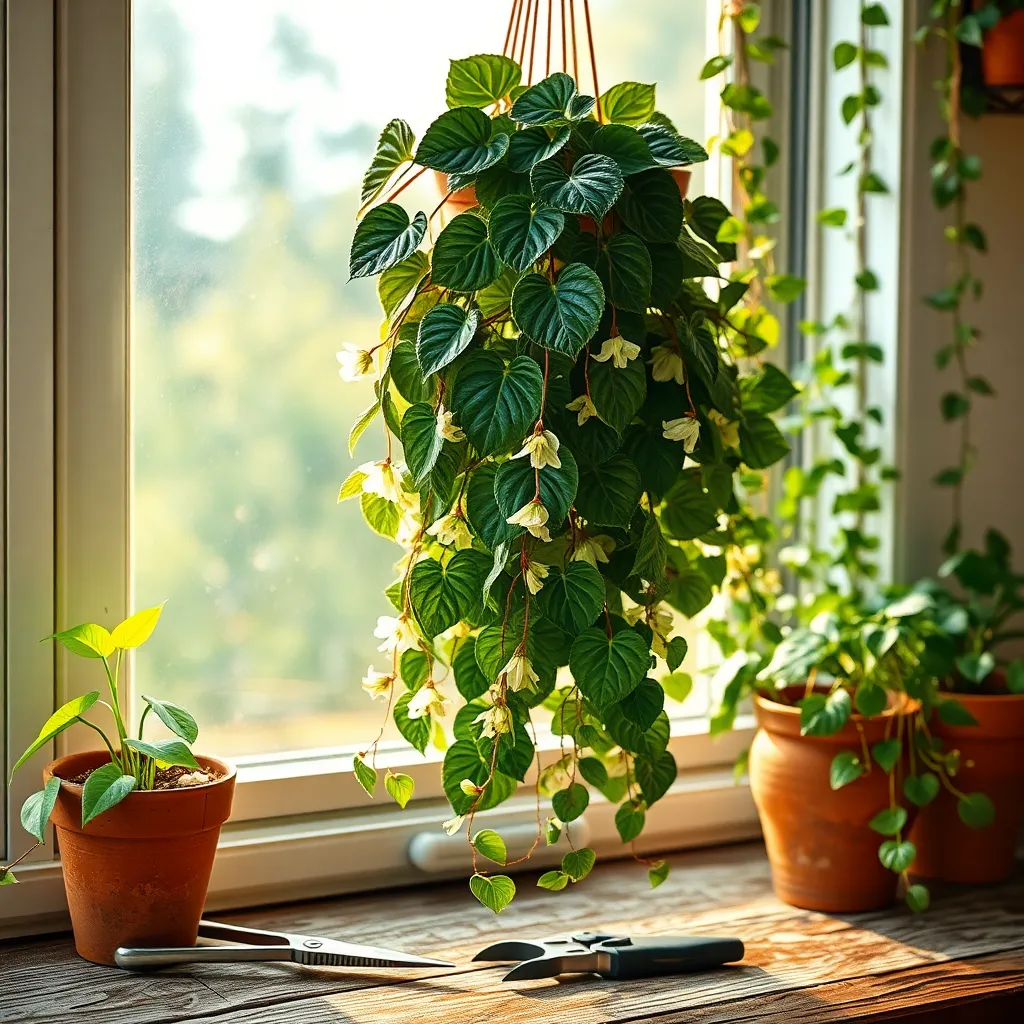
Starting with the right soil is crucial for the health of your rare hanging plants. Use a well-draining potting mix with added perlite or orchid bark to ensure proper aeration and prevent root rot.
Watering these plants correctly is key to their success. Allow the top inch of soil to dry out between waterings, as overwatering is a common mistake that can lead to plant health issues.
Don’t forget to provide your plants with adequate light. Most rare hanging plants thrive in bright, indirect light, so placing them near a north or east-facing window is ideal.
Fertilization can enhance growth, but moderation is vital. Apply a balanced, water-soluble fertilizer every month during the growing season to support vibrant foliage and healthy development.
Pruning is another essential care tip to keep your plants looking their best. Regularly trim back any leggy or damaged growth to encourage bushier, more attractive plants.
For those ready to take their plant care to the next level, consider propagating cuttings to expand your collection. Simply snip a healthy stem, remove the lower leaves, and place it in water or moist soil until roots develop.
Watering Needs of Hanging Varieties
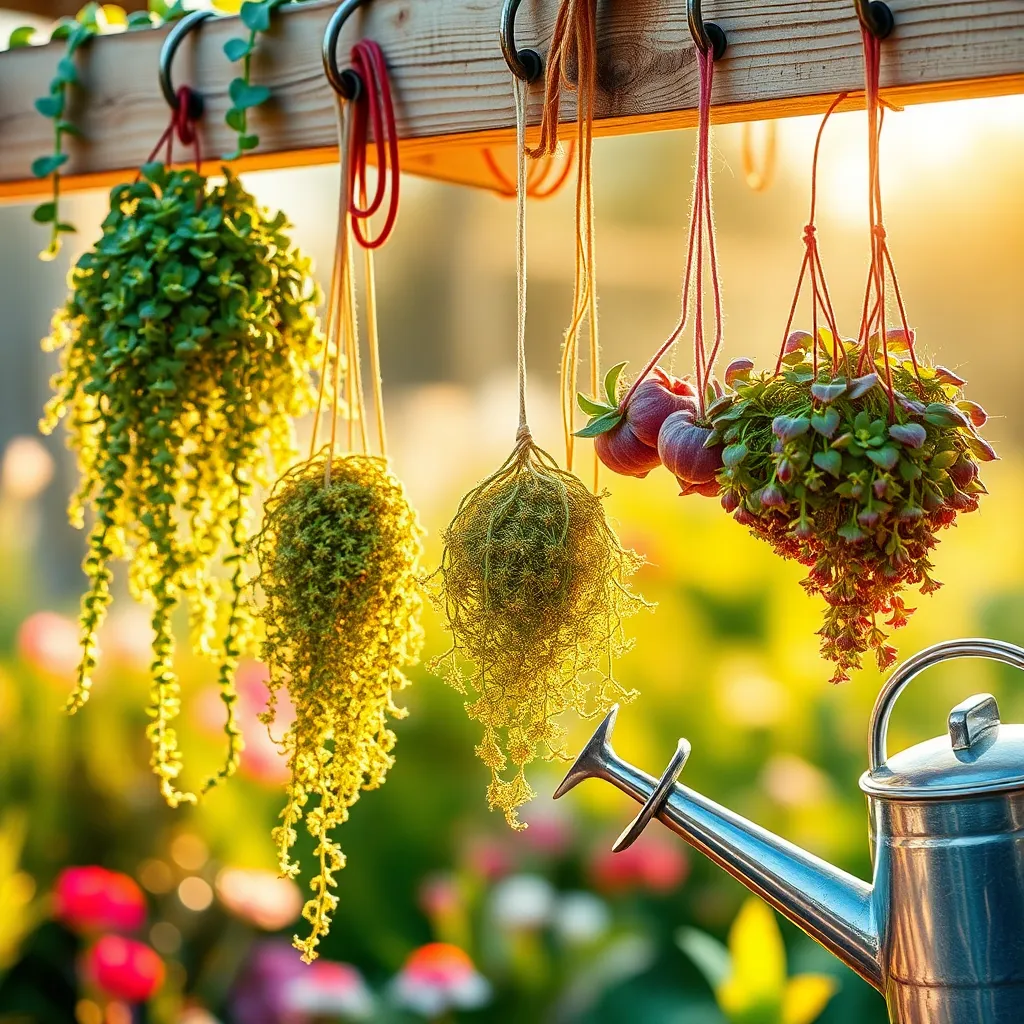
Watering is crucial for hanging plants, as they tend to dry out faster than those planted in the ground. Check the soil moisture daily and water when the top inch feels dry, but avoid over-watering as this can lead to root rot.
Using a well-draining potting mix is essential to prevent waterlogging. Consider adding perlite or sand to the soil to enhance drainage and aeration, which benefits root health.
For beginners, a simple rule is to water your hanging plants until you see water draining from the bottom of the pot. This ensures that the entire root ball receives adequate moisture, promoting healthy growth.
Advanced gardeners might experiment with self-watering pots that maintain consistent moisture levels. These pots can be particularly useful for maintaining the needs of more delicate hanging varieties, such as Ceropegia woodii (String of Hearts).
Fertilizing for Optimal Growth
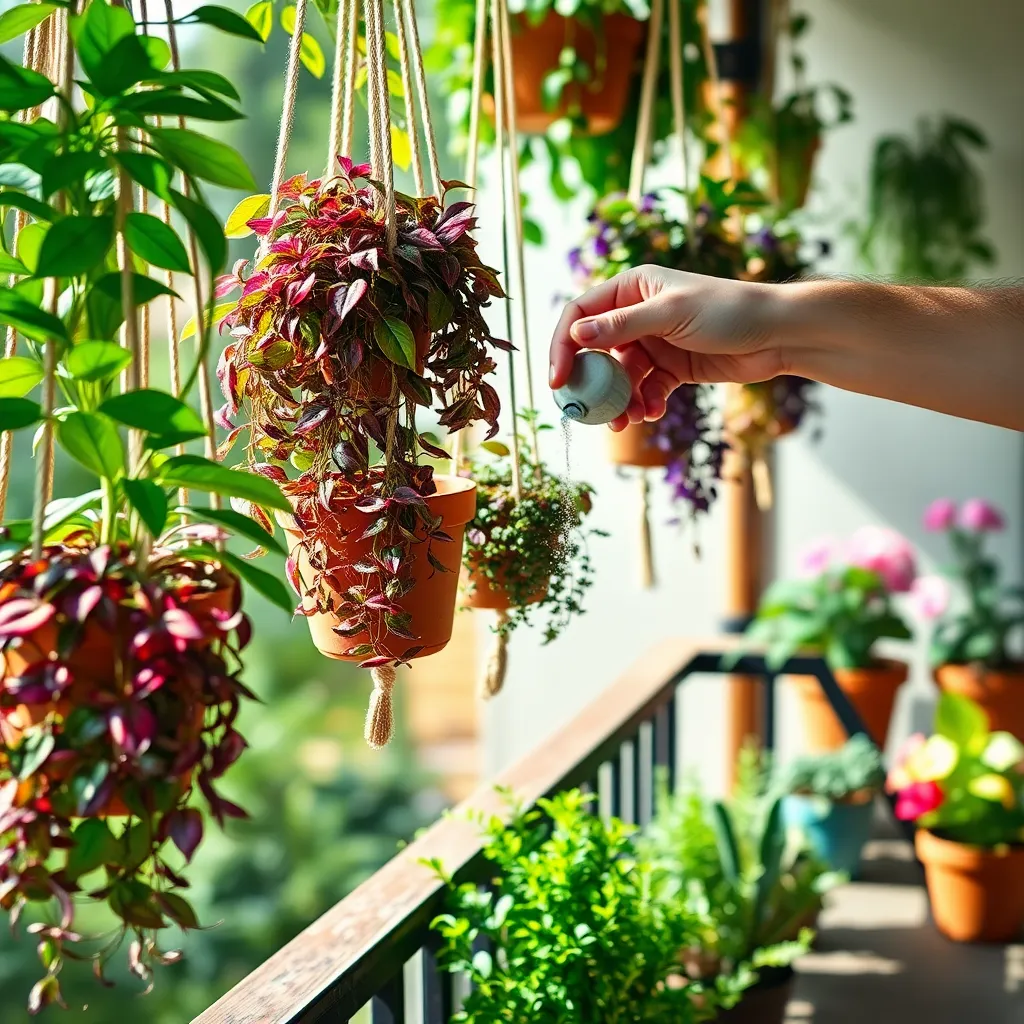
For optimal growth of your rare hanging plants, regular fertilization is essential. Begin by choosing a balanced, water-soluble fertilizer to provide an even mix of nutrients.
Incorporate fertilizing into your routine by feeding your plants every four to six weeks during the growing season. This schedule ensures your plants receive consistent nutrients, promoting lush foliage and vibrant blooms.
When applying fertilizer, dilute it to half the recommended strength to prevent root burn. This technique offers gentle nourishment and is especially beneficial for beginners who are cautious about over-fertilizing.
Advanced gardeners might explore slow-release fertilizers as an alternative, which can be mixed into the soil at planting time. These products gradually release nutrients, reducing the frequency of feedings and offering a more hands-off approach.
Troubleshooting Common Plant Issues
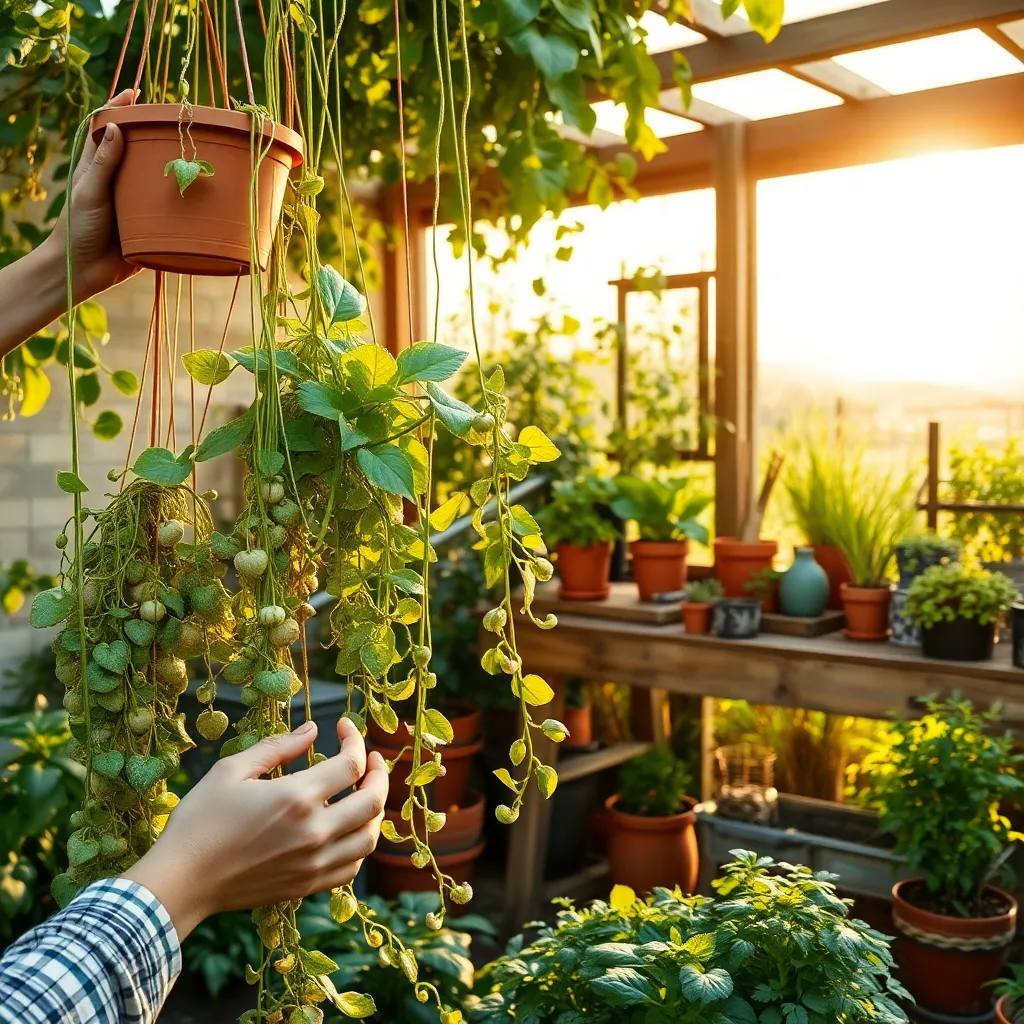
When your rare hanging plants aren’t thriving, it’s crucial to first evaluate their light conditions. Most of these plants prefer bright, indirect light, so if leaves are yellowing, consider moving them to a spot with more filtered sunlight.
Another common issue is overwatering, which can lead to root rot. Ensure your pots have proper drainage, and allow the top inch of soil to dry out between waterings to prevent this problem.
A lack of nutrients can also cause plants to look dull or stop growing. Consider using a balanced, water-soluble fertilizer monthly during the growing season to provide the necessary nourishment.
For some hanging plants, pest infestations like spider mites or aphids can be problematic. Regularly inspect the undersides of leaves and treat any infestations promptly with insecticidal soap or neem oil.
Finally, if your plant’s growth seems stunted despite good care, it might be root-bound. Gently remove the plant from its pot to check if roots are circling the container, and if so, repot into a slightly larger pot to allow for healthy expansion.
Conclusion: Growing Success with These Plants
In exploring the world of rare hanging plants, we’ve uncovered six key relationship concepts that resonate with nurturing growth: adaptability, patience, communication, support, space, and appreciation. Just like these resilient plants, relationships thrive when partners adapt to changes, communicate openly, and provide support while respecting each other’s space. Patience is the soil from which lasting connections grow, and genuine appreciation is the sunlight that nourishes the heart.
As a next step, consider choosing one relationship concept to focus on this week. Whether it’s practicing active listening or finding new ways to express gratitude, small actions can lead to significant growth. To ensure these insights remain at your fingertips, bookmark this article for future reference. This way, you can revisit these concepts and continually enhance your relationship toolkit.
Remember, the journey to relationship success is ongoing, just like the care of a flourishing plant. By nurturing these fundamental elements, you plant the seeds for a thriving, resilient partnership. Embrace the challenge, bookmark this guide, and watch your relationship blossom into something truly beautiful.

